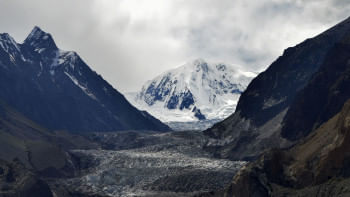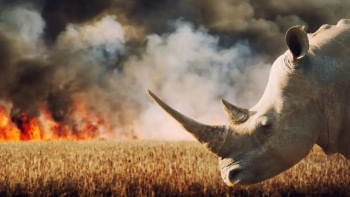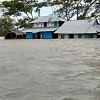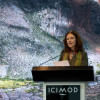We are approaching a tectonic moment for our planet

At the 21st Conference of Parties (COP21) held in Paris, 196 nations agreed to keep the rise in the average global temperature to 2 degrees Celsius above pre-industrial levels while endeavouring to limit it to 1.5 degrees by the year 2100. After adoption of the agreement on December 12, 2015, the then Secretary General of the UN Ban Ki Moon said, "Today's Summit has shown that we can rise to the climate challenge."
Did we really "rise to the climate challenge?" No, we did not because the promises made by the participating nations at COP-21 exist mostly on paper. In the meantime, our planet is continuing to warm at an "unprecedented rate" without showing any signs of abating. The concentration of planet-warming carbon dioxide in the atmosphere is on the rise and have reached an all-time high this year, representing an accumulation "not seen for millions of years." As of June 8, 2023, the concentration was 423.62 parts per million, a 5.7 percent increase over the 2015 level.
Today, Siberia, once a relatively cooler part of our planet, is sweltering with temperatures close to 40 degrees. Several countries in Asia, including Bangladesh, Thailand, Laos and Vietnam have already seen record-shattering temperatures between 40 and 45 degrees. The noxious smoke from the out-of-control forest fires in Québec – an upshot of global warming – choked people living in and around New York City, which is about 500 km away, with an Air Quality Index in the hazardous zone, surpassing 300 (on a 500-point scale) on June 7.
While these and other extreme weather-related events are wreaking havoc worldwide, "climate politicians" are busy preparing the agenda for the next annual road show, COP-28, to be held in December of this year in Dubai. Will the attending heads of governments or their representatives again make empty promises and lull us with false hopes? We hope not, although in all the previous conferences, world leaders, save a few, agreed on the science of climate change, yet failed to develop a collective approach to tackle the problem.
According to a report by the World Meteorological Organization published on June 7, 2023, we are facing the harsh reality that there is a 66 percent likelihood of global temperatures breaching the 1.5-degree threshold set at COP-21 for the first time by 2027. Yes, 2027, not 2100, as agreed upon in 2015. However, as the breach will be boosted by a transition to an El Niño climate pattern, the rise is expected to be temporary, but with increasing frequency.
And now the bombshell news. According to a report by the World Meteorological Organization published on June 7, 2023, we are facing the harsh reality that there is a 66 percent likelihood of global temperatures breaching the 1.5-degree threshold set at COP-21 for the first time by 2027. Yes, 2027, not 2100, as agreed upon in 2015. However, as the breach will be boosted by a transition to an El Niño climate pattern, the rise is expected to be temporary, but with increasing frequency.
Nevertheless, will our planet be doomed if the temperature rises by 1.5 degrees? Besides an utter failure of the binding treaty hammered out at COP-21, breaching 1.5 degrees will be a tectonic moment for the planet with far-reaching repercussions for its inhabitants.
So far, a change of 1.1 degree in average global temperature since 1880 has inflicted irreversible damage to our environment. It has jeopardised our health, our economy, our agriculture, our food and energy security, among other things. More importantly, it is threatening our civilisation and the future of our children. Hence, a 1.5-degree rise will cause even more damage and push our planet into a new, more dangerous climate domain.
The effects will not be uniform across the planet. Some regions will heat up faster than other regions. Due to an accelerated positive feedback loop known as Arctic Amplification, polar regions will experience warming at a much faster rate than other regions. In a study published in the journal Communications Earth & Environment, researchers report that the Arctic is heating up roughly four times faster than the entire planet.
Hotter polar regions will mean more melting of ice sheets, resulting in greater habitat loss for polar bears, whales, seals and other cold weather animals. Moreover, loss of ice will exacerbate the rate at which sea levels are rising.
More permafrost and glaciers, holding and keeping deadly bacteria frozen, will melt. Once the hibernating bacteria come to life, they will attack humans with vengeance. This will lead to increased disease and potentially more pandemics.
A 1.5-degree of warming will be disastrous for coastal and small island nations. Because of rising sea levels, coastal communities will lose their homes and habitats. Even cities away from the coasts will see frequent flooding. We have already seen thousand-year flooding events around the world in recent years.
Both days and nights will be unusually hot. Heat waves will be longer, more intense and air will be unbreathable, thereby posing a serious threat to survival, particularly for people living along the tropics, as well as in areas arching across the equator.
Deserts will grow in size and become hotter. Many nations, otherwise drought-free, will become more prone to droughts and water shortages. Consequently, crop yields will be lower, leading to famine. Furthermore, the vicious cycle of heating and deforestation will turn regions with rainforests into Savannah-like regions.
Frequency and magnitude of extreme weather events, such as raging storms – latest one is cyclone Biporjoy, devastating floods and ferocious wildfires will increase. More water will evaporate from the oceans, which in turn will make the heaviest rains and snowfalls even heavier in many parts of the world.
Higher temperatures will cause many species to become extinct. Triggered by temperature-induced bleaching, almost all tropical coral reefs, which act as nurseries for many fish, will be severely degraded.
These are some out of the many dire climate-related consequences that will adversely affect our planet if the temperature rises by 1.5 degrees. It is beyond the scope of this article to mention all of the consequences.
Finally, to hold the rise of global temperature to a safer limit, preferably below 1.5 degrees, we have to act with great urgency. Voluntary measures alone by concerned individuals will not save us. We need swift, robust actions instead of political dithering by countries that are largely responsible for global warming. Otherwise, the writing on the wall is clear. Catastrophe is looming on the horizon.
Dr Quamrul Haider is a Professor of Physics at Fordham University in New York, USA.

 For all latest news, follow The Daily Star's Google News channel.
For all latest news, follow The Daily Star's Google News channel. 










Comments